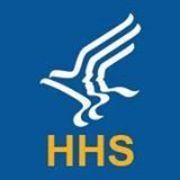CMS Says 121 New Medicare ACO Participants Advance Quality
“We are moving Medicare and the entire health care system toward paying providers based on the quality, rather than the quantity of care they give patients. The three new ACO initiatives being launched today mark an important step forward in this effort."

- The new future of the Accountable Care Organization is here. The Centers for Medicare & Medicaid Services (CMS) has announced 121 new Medicare Accountable Care Organization (ACO) participants. Yesterday’s press release from the U.S. Department of Health and Human Services (HHS) confirmed a series of innovative initiatives aimed to lower healthcare costs and advance patients’ care quality.

As the healthcare industry transitions away from a traditional fee-for-service model to a volume-based realm, the ACO – once a new term – is perhaps becoming much more than just another trending buzzword preceded by a hashtag.
ACOs — groups of doctors and hospitals that care for a patient collaboratively — are paying closer attention to the alleged benefits of sharing cost information.
Sharing is caring with ACO expansion
Approaching care from a plethora of shared angles may result in much more meaningful care delivery. ACOs make the patient the heart of the healthcare delivery system, said CMS.
Seventy percent of the U.S. population allegedly resides in an area served by ACOs, said consulting firm Oliver Wyman. Nearly 1 in 2 Americans reportedly lives in an area served by at least 2 ACOs.
ACOs cover the lives of over 23 million patients, according to recent research from Leavitt Partners.
“Value-based care delivery models designed to improve the financial and quality outcomes of health care organizations have been the focus of the health care discussion for several years,” wrote Leavitt Partners.
Yet debate is still relentlessly swirling across the healthcare industry about whether or not the potential benefits of ACOs are worth possible financial risk. The ACO bandwagon is perhaps getting a tad bit crowded, but power in numbers seems to be prevailing.
“For the last several years, [ACOs] have grown rapidly as a model of paying for and delivering health care. Despite this momentum, the future of the model remains uncertain.”
ACOs, designed to how people pay for medical care incentives, now represent 49 states and the District of Columbia, CMS said.
 “Americans will get better care and we will spend our health care dollars more wisely because these hospitals and providers have made a commitment to change how they do business and work with patients,” Sylvia M. Burwell, HHS Secretary, stated.
“Americans will get better care and we will spend our health care dollars more wisely because these hospitals and providers have made a commitment to change how they do business and work with patients,” Sylvia M. Burwell, HHS Secretary, stated.
“We are moving Medicare and the entire health care system toward paying providers based on the quality, rather than the quantity of care they give patients. The three new ACO initiatives being launched today mark an important step forward in this effort.”
ACOs intend to address simple care quality problems and simple cost reduction issues. Ill and injured patients are often being shuttled aimlessly from hospital to doctor’s office to yet another doctor’s office, CMS said. Patients are undergoing duplicative tests and receiving uncoordinated care, the organization added.
“ACOs are delivering better care, and they continue to show promising results on cost savings,” CMS explained.
In 2014, they had a combined total net program savings of $411 million for 333 Medicare Shared Savings Program (Shared Savings Program) ACOs and 20 Pioneer ACOs.
Based on 2014 quality and financial performance results for Shared Savings Program ACOs who started the program in 2012, 2013, and 2014, those that reported in both 2013 and 2014 improved on 27 of the 33 quality measures, including patients’ ratings of clinicians’ communication, beneficiaries’ rating of their doctors, screening for tobacco use and cessation, screening for high blood pressure, and Electronic Health Record use.
Shared Savings Program ACOs also outperformed group practices reporting quality on 18 out of 22 measures.
“Accountable Care Organizations are improving quality of care and spending dollars more wisely. These new initiatives place patients at the center of a coordinated care delivery system and give providers the tools to achieve better outcomes,” said Patrick Conway, CMS’s Deputy Administrator for Innovation and Quality and Chief Medical Officer.
CMS says more providers, hospitals joining ACO bandwagon
More and more healthcare providers and hospitals are hopping onboard the ACO train, indicated CMS. Payment will now be administered tied to positive patient outcomes, CMS confirmed. On the flipside, there will be penalties for producing low outcomes.
Additionally, there will be brand new participants in the Shared Savings Program (SSP), the Next Generation ACO Model, Pioneer ACO Model, and the Comprehensive ESRD Care Model.
There are now 477 ACOs across SSP, Pioneer ACO Model, Next Generation ACO Model, and Comprehensive ESRD Care Model, said CMS. A total of almost 9 million beneficiaries will reportedly be served.
64 ACOs are in a risk-bearing track, CMS confirmed. These particular ACOs include SSP, Pioneer ACO Model, Next Generation ACO Model, and the Comprehensive ESRD Care Model.
Breaking down the Pioneer ACO Model
The Pioneer ACO Model, which reportedly has a total of 21 participants, “offers a new opportunity in accountable care — one that enables providers and beneficiaries greater opportunities to coordinate care and aims to attain the highest quality standards of care,” CMS stated.
“Unlike other models, this model includes a prospectively (rather than retrospectively) set benchmark, allows beneficiaries to choose to be aligned to the ACO, and tests beneficiary incentives for seeking care at Next Generation providers, including increased availability of telehealth and care coordination services.”
The Next Generation Model participants may be able to up their financial risk levels by up to 100 percent risk compared to the current way ACOs operate, said CMS.
“[They] are at greater financial risk [but have a] greater opportunity to share in more of the Model’s savings through better care coordination and care management.”
“In addition, the ACOs will receive their budgets prospectively, in advance of the performance year, to plan and manage care around these financial targets from the outset. The ACOs will also be able to select from flexible payment options, such as infrastructure payments that support ACO investments in care.”
January welcomes 100 new Medicare Shared Savings participants
At the start of the New Year last January 1, 2016, The Medicare Shared Savings Program greeted 100 new ACOs and nearly 150 renewing ACOs, said CMS.
“Since the start of the ACO program in early 2012, thousands of health care providers have signed on to participate.”
This year there will be nearly 15,000 more physicians involved in the ACO program. CMS asserted.
CMS will have 434 ACOs participating in the Shared Savings Program in 2017 now that the new ACO cohort has been established, CMS added. This means over 7.7 million beneficiaries will reportedly be served.
“ACOs have demonstrated increased interest in performance-based risk arrangements, with 22 ACOs now opting for either Track 2 or Track 3 participation.”
The AIM model aims for high quality to keep cost low
Thirty-nine Shared Savings Program ACOs will additionally partake in what is referred to as an ACO Investment Model (AIM).
Forty-one AIM participants will provide pre-paid shared savings to help coerce the establishment of new ACOs in rural, underserved areas.
AIM also aims to encourage current Shared Savings Program ACOs to make the switch to a performance-based risk arrangement, CMS said.
“The up-front payments distributed through the AIM support ACOs in improving infrastructure and redesigning care processes to provide beneficiaries with lower cost and higher quality health care.”
